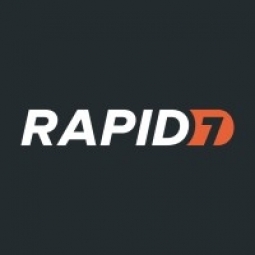Download PDF
Maximus Enhances Compliance and Minimizes Risk with Rapid7 Cloud Security
Technology Category
- Cybersecurity & Privacy - Cloud Security
- Infrastructure as a Service (IaaS) - Public Cloud
Applicable Industries
- Cement
- National Security & Defense
Applicable Functions
- Logistics & Transportation
- Quality Assurance
Use Cases
- Leasing Finance Automation
- Tamper Detection
Services
- Cloud Planning, Design & Implementation Services
The Challenge
Maximus, a leading strategic partner to governments worldwide, faced a significant challenge in enforcing standards and ensuring consistency across all public cloud environments. With over 200 AWS accounts under management and a growing Azure presence, visibility into numerous projects spanning AWS and Azure was critical. The company needed a solution that would enforce standards across all public cloud accounts and regions, provide visibility into non-compliant resources, create an exception process for certain resources, and deliver an automated way to take remediation action. Enforcing standards across the entire enterprise with hundreds of AWS accounts and Azure subscriptions and different support models was a daunting task.
About The Customer
Maximus is a leading strategic partner to governments across the globe, helping to improve the delivery of public services amid complex technology, health, economic, environmental, and social challenges. The company delivers innovative business process management, impactful consulting services, and technology solutions that provide improved outcomes for the public and higher levels of productivity and efficiency for government-sponsored programs. Maximus has a deep understanding of program service delivery, acute insights that achieve operational excellence, and an extensive awareness of the needs of the people being served.
The Solution
To address these challenges, Maximus implemented InsightCloudSec, Rapid7’s cloud risk and compliance solution. Rapid7 worked with Maximus to customize the product release to meet their compliance requirements, resulting in an increased total compliance score across Maximus’ multi-cloud environment. Maximus chose Rapid7 for its consolidated visibility of active cloud resources running across multi-cloud environments, continuous monitoring and assessment of compliance against customized organizational security standards, real-time detections of compliance state changes, and the ability to both manually and automatically enforce compliance and update configurations and access permissions of non-compliant resources. The ease-of-use of Rapid7 InsightCloudSec was a deciding factor, with its ability to easily scale and integrate with Splunk to enrich data and display it in consumable dashboards for Security, IT, and project owners.
Operational Impact
Quantitative Benefit
Related Case Studies.

Case Study
System 800xA at Indian Cement Plants
Chettinad Cement recognized that further efficiencies could be achieved in its cement manufacturing process. It looked to investing in comprehensive operational and control technologies to manage and derive productivity and energy efficiency gains from the assets on Line 2, their second plant in India.

Case Study
Data Capture for Afghanistan Forces
Electronic equipments on the field of Afghanistan provided information on the status of the vehicle and to identify potential threats surrounding it to the British Force. The monitoring and interpretation of this data requires robust and sophisticated digitization for data capture and communication.

Case Study
Digital Transformation of Atlanta Grout & Tile: An IoT Case Study
Atlanta Grout & Tile, a Tile, Stone & Grout restoration company based in Woodstock, Georgia, was facing challenges with its traditional business model. Despite steady growth over the years, the company was falling behind the web revolution and missing out on the opportunity to tap into a new consumer base. They were using independent software from different vendors for each of their department information and workforce management. This resulted in a lot of manual work on excel and the need to export/import data between different systems. This not only increased overhead costs but also slowed down their response to clients. The company also had to prepare numerous reports manually and lacked access to customer trends for effective business decision-making.

Case Study
Major Aerospace Company Automates Asset Management
The O&M division of an aerospace and global security company was using spreadsheets to manually track more than 3,000 assets assigned to students and staff. Maintaining audit trails for this high volume of equipment became increasingly time-consuming and challenging. The chore involved knowing precisely what equipment was on hand, what had been issued, its location and the name of the custodial owner of each item. Every aspect of this task was carried owner of each item. Every aspect of this task was carried out by individuals with spreadsheets. Manually documenting the full lifecycle of each asset added to the burden. This included tracking maintenance requirements and records, incidents and damages, repairs, calibrations, depreciation, and end-of-life data.

Case Study
Revolutionizing Construction Equipment Rental: A Case Study on ProsRent and ENO8
ProsRent, a startup that won the 'Best Financial Opportunity' and 'Best Pitch' at CodeLaunch 2016, aimed to revolutionize the way construction professionals source and rent heavy equipment. In the construction industry, project managers and contractors typically rent heavy equipment from supply companies. However, predicting inventory can be challenging, and finding the required equipment at the right time and place can be a hassle. If the preferred vendor doesn't have the required equipment, it results in wasted time and money in searching for it, often leading to higher costs due to non-preferred rates and increased delivery costs if the vendor is located far from the job site. Suppliers, on the other hand, desired access to a wider base of trusted renters that they didn't have to vet themselves and wanted to offer dynamic rental pricing based on demand and availability in their market. ProsRent's challenge was to produce a minimum viable product that was fast and first to market but also strong enough to engender loyalty and repeat business from the target market.






